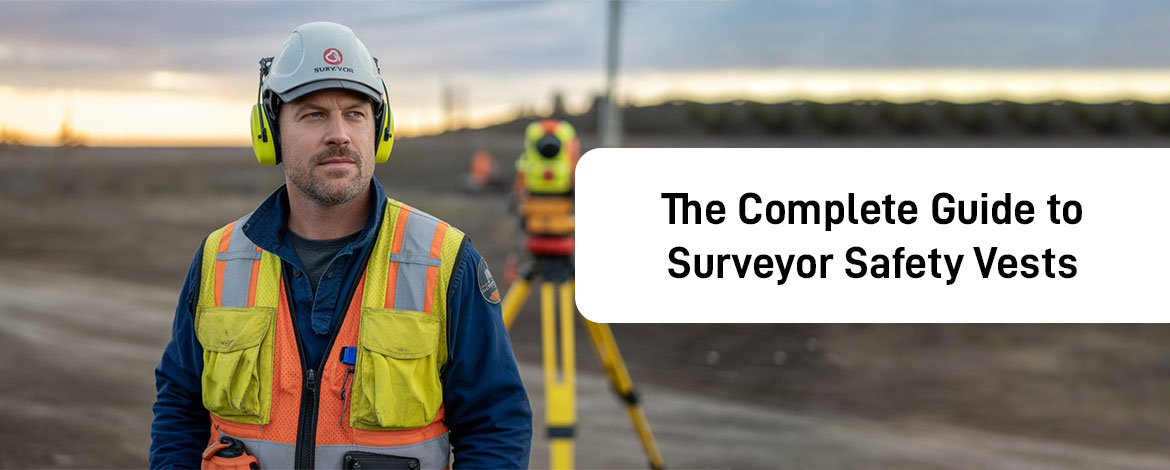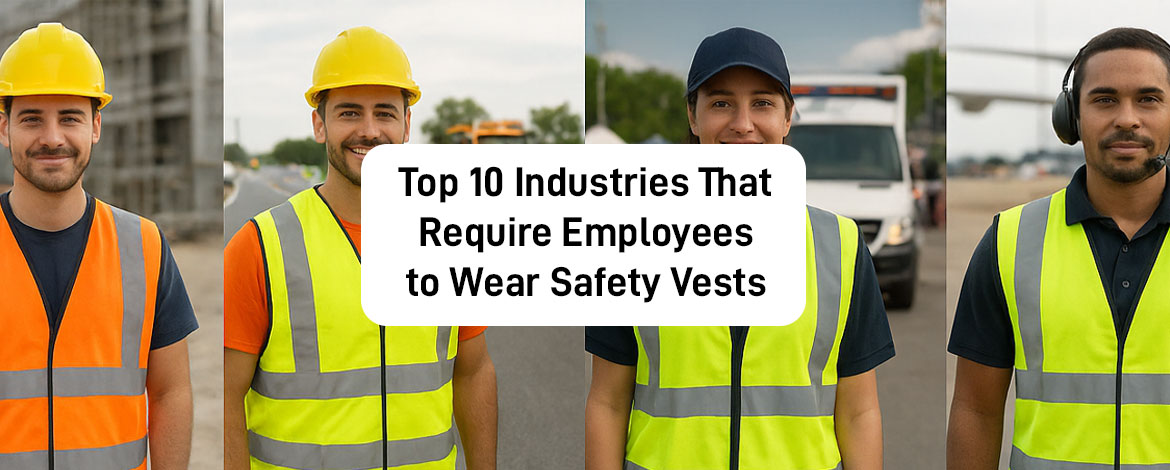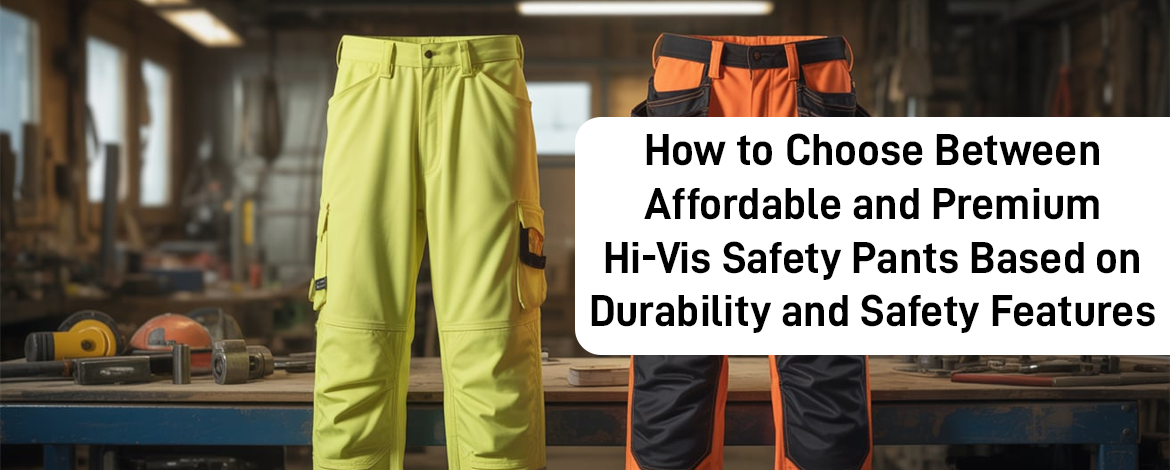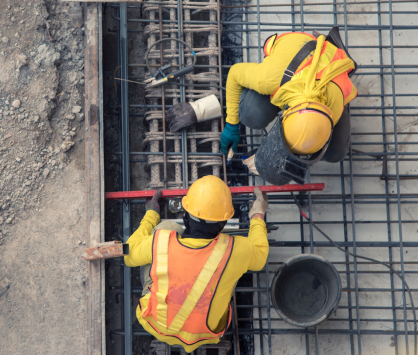The Complete Guide to Surveyor Safety Vests
- 10 min read

In the demanding world of land surveying, safety and visibility are non-negotiable. Surveyors often operate near roadways, construction zones, and open terrains where visibility can make the difference between safety and hazard.
A surveyor safety vest serves as both protection and identification, ensuring workers remain visible to drivers and equipment operators in all conditions.
Beyond visibility, these vests are designed to provide functionality and comfort, offering multiple pockets, durable fabrics, and compliance with ANSI/ISEA safety standards. From heavy-duty field models to lightweight open-road versions, understanding the right vest for your job is essential for both compliance and confidence on the worksite.
Understanding Surveyor Safety Vest Classes
Surveyor safety vests are categorized by visibility performance under ANSI/ISEA 107 standards. These classes ensure that each vest meets the visibility requirements for specific environments and levels of risk.
Class 2 Surveyor Safety Vest
Designed for moderate-risk areas such as suburban roads or survey sites where traffic travels between 25–50 mph. These vests typically feature larger reflective bands and fluorescent colors to ensure clear visibility in daylight and low-light conditions.
Class 3 Surveyor Safety Vest
Built for high-risk or low-visibility environments, such as highways with traffic exceeding 50 mph, nighttime operations, or poor weather conditions. Class 3 vests offer full-body coverage with additional reflective tape on arms and legs, providing the highest level of visibility for surveyors working in dangerous zones.
Knowing your worksite's conditions is key to selecting the appropriate vest class — a decision that can directly impact your safety.
Heavy Duty Surveyor Safety Vest
When endurance and functionality matter most, a heavy-duty surveyor safety vest is the go-to option. Constructed from reinforced 600D polyester or canvas, these vests are designed to withstand rugged fieldwork and long-term outdoor use.
Key features often include:
- 1. 20+ pockets to store field gear like markers, GPS devices, and tablets.
- 2. Reinforced stitching and durable zippers for extended lifespan.
- 3. Cushioned collars and mesh linings that enhance comfort during extended shifts.
- 4. Secure closures and adjustable sides for a stable fit over bulky clothing or equipment.
Heavy-duty vests are ideal for surveyors in construction, mining, and forestry, where protection from debris, dirt, and environmental stress is essential.
Open Road Surveyor Safety Vest
Surveyors working near highways or bridges face unique hazards that require maximum visibility and compliance. The open road surveyor vest is designed specifically for these high-speed and high-risk zones.
These vests:
- 1. Meet or exceed ANSI Class 2 or Class 3 requirements.
- 2. Are often available in flame-resistant (FR) materials for added protection near flammable hazards.
- 3. Features high-contrast reflective striping patterns for enhanced recognition from all angles.
- 4. Use breathable, lightweight fabrics to reduce heat buildup during long shifts.
Perfect for surveyors handling transportation infrastructure, open road vests ensure both visibility and comfort in the most challenging environments.
Key Features to Look for:
When selecting a surveyor safety vest, pay attention to features that combine safety, comfort, and practicality.
Essential elements include:
- 1. High-visibility fluorescent fabrics, typically in yellow-green or orange, for standout visibility in all lighting conditions.
- 2. Retroreflective materials that reflect light from headlights or work lamps, offering 24-hour visibility.
- 3. Multi-pocket designs to carry radios, notepads, measuring tapes, and field tablets.
- 4. Moisture-wicking mesh for comfort during hot or humid weather.
- 5. Adjustable fits and reinforced seams for long-term durability.
A well-designed vest doesn't just meet standards it supports your workflow efficiently and comfortably.
How to Choose the Right Vest
Choosing the right surveyor vest depends on your work environment, risk level, and task requirements.
Class 2 vs. Class 3:
Choose Class 2 for moderate-speed traffic or daylight operations; go for Class 3 in high-speed, night, or poor-visibility conditions.
Heavy Duty vs. Open Road:
Opt for heavy-duty vests if your work involves extended outdoor tasks, rough handling, or equipment-intensive jobs.
Select open road vests for mobility, compliance, and superior visibility in high-risk traffic zones.
Budget vs. Performance:
While budget-friendly models may meet basic standards, investing in premium, ANSI-certified safety vests provides better longevity, comfort, and overall protection — a smart choice for professionals who value safety and professionalism equally.
Maintenance and Replacement
A safety vest is only effective when maintained properly. Improper cleaning or prolonged use can degrade its visibility and structure.
Care Tips:
- 1. Wash with cool water and mild detergent.
- 2. Avoid bleach, high heat, or harsh scrubbing, which can damage reflective materials.
- 3. Air dry rather than using dryers to preserve the integrity of reflective stripes.
When to Replace:
- 1. Visible fading or discoloration of fluorescent fabric.
- 2. Tearing or fraying seams that compromise durability.
- 3. Dull or cracked reflective tape, which reduces nighttime visibility.
Regular inspection ensures that your vest remains compliant and protective at all times.
Final Thoughts
Surveyor safety vests are far more than just uniform — they're an essential line of defense in the field. The right vest improves visibility, compliance, and confidence, ensuring that every surveyor can perform their duties safely and efficiently.
By investing in high-quality, ANSI-compliant vests, professionals not only protect themselves but also project a standard of care and professionalism that defines modern fieldwork. Whether it's a heavy-duty vest for rugged terrains or an open road vest for high-speed zones, we have the right gear that ensures safety and performance go hand in hand on every job site.
Stay visible. Stay safe. Get the right vest at Hi Vis Kings today.

From construction zones to runways, high-visibility vests are vital PPE, enhancing worker visibility, preventing accidents, and ensuring safety on the job
- 7 min read

If you do hard, physical work in wet conditions, Check out five tough-as-nails safety jackets.
- 8 min read

Selecting the right safety pants can significantly affect a worker's protection and comfort on the job.
- 10 min read

If you do hard, physical work in cold conditions, you need a Hi Vis Kings jacket that can hang tough.
- 3 min read













